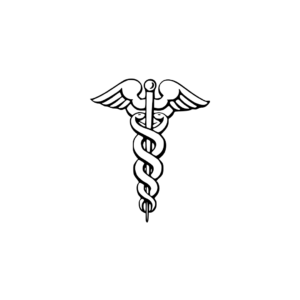Description
Overview of Post Graduate Diploma in Radiology & Imagery Technology (PG Diploma in RIT)
The Post Graduate Diploma in Radiology and Imagery Technology (PG Diploma in RIT) is designed to equip healthcare professionals with specialized knowledge and skills in radiology and imaging technology. This program emphasizes the principles of medical imaging, including the use of various imaging modalities, techniques, and their applications in diagnosing and monitoring diseases.
Core Areas of Study in PG Diploma in Radiology & Imagery Technology
Introduction to Radiology
Fundamentals of radiology, including the history, significance, and development of imaging technologies in medicine.
Radiographic Techniques
Detailed study of techniques used in X-ray imaging, including positioning, exposure factors, and image quality control.
Computed Tomography (CT)
Principles of CT imaging, including technology, scanning protocols, and interpretation of CT images for diagnostic purposes.
Magnetic Resonance Imaging (MRI)
Understanding MRI physics, machine operation, patient preparation, scanning techniques, and image interpretation.
Ultrasound Technology
Fundamentals of ultrasound imaging, including Doppler studies, abdominal, obstetric, and vascular ultrasound techniques.
Radiation Physics and Safety
Principles of radiation physics, dosage management, safety protocols, and the role of radiation protection for patients and staff.
Imaging Modalities and Applications
Overview of various imaging modalities, their applications, and the latest advancements in diagnostic imaging technology.
Contrast Media and Their Uses
Study of various contrast agents used in imaging procedures, their administration, and potential complications.
Clinical Practice in Radiology
Practical applications of imaging techniques in clinical settings, including patient care, preparation, and ethical considerations.
Research Methodology in Radiological Sciences
Introduction to research methods and statistical analysis relevant to radiology and imaging technology.
Curriculum Structure
A typical PG Diploma in Radiology & Imagery Technology program may include:
Core Courses: Required coursework covering essential topics in radiology, imaging techniques, and patient care.
Elective Courses: Options for specialization in areas such as pediatric radiology, advanced ultrasound techniques, or interventional radiology.
Clinical Practicum or Internships: Hands-on experience in healthcare settings, allowing students to apply theoretical knowledge and gain practical skills in imaging technology.
Capstone Project or Research Thesis: A project that allows students to explore specific areas of interest within radiology and present their findings.
Admission Requirements
Admission to a PG Diploma in Radiology & Imagery Technology program usually involves:
A bachelor?s degree in a health-related field, such as radiologic technology, nursing, or other health sciences.
Relevant clinical experience may be preferred or required.
A minimum GPA or academic qualifications as specified by the institution.
Letters of recommendation from academic or professional sources.
A personal statement outlining the candidate?s interest in radiology and career goals.
Skills Developed in a PG Diploma in RIT Program
Graduates of the Post Graduate Diploma in Radiology & Imagery Technology program will develop a range of important skills, including:
Technical Proficiency: Mastery of various imaging modalities, techniques, and best practices in obtaining high-quality diagnostic images.
Clinical Interpretation: Ability to interpret imaging studies accurately and understand their implications for patient management.
Patient Care Skills: Competence in communicating with patients, preparing them for procedures, and providing care during imaging studies.
Radiation Safety Awareness: Knowledge of radiation protection principles and implementation of safety protocols to minimize exposure.
Research and Analytical Skills: Capacity to conduct research and critically evaluate literature related to radiology and imaging technology.
Career Opportunities
Graduates with a Post Graduate Diploma in Radiology & Imagery Technology can pursue various career paths, including:
Radiologic Technologist
Performing diagnostic imaging examinations and collaborating with radiologists and healthcare teams.
CT or MRI Technologist
Specializing in computed tomography or magnetic resonance imaging, working in hospitals or outpatient imaging centers.
Ultrasound Technician
Conducting ultrasound examinations and assisting in the diagnosis of various medical conditions.
Radiation Safety Officer
Implementing and overseeing radiation safety protocols and ensuring regulatory compliance in healthcare settings.
Clinical Instructor in Radiology
Teaching and training upcoming radiologic technologists and imaging professionals in academic or clinical environments.
Radiology Sales and Applications Specialist
Working with medical equipment companies to provide product support and training related to imaging technology.
Conclusion
The Post Graduate Diploma in Radiology & Imagery Technology program prepares graduates for advanced roles in the imaging field, equipping them with the technical skills and knowledge necessary to excel in diagnostic imaging and patient care. With a focus on clinical practice, research, and emerging technologies, graduates are well-prepared to contribute significantly to the healthcare industry. If you have more questions about the PG Diploma in Radiology & Imagery Technology program or related topics, feel free to ask!









